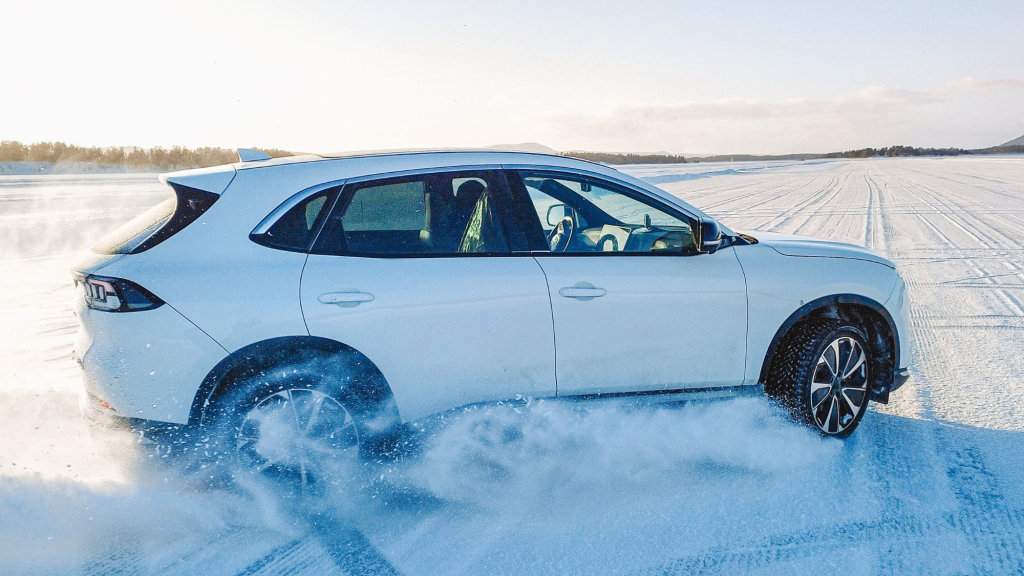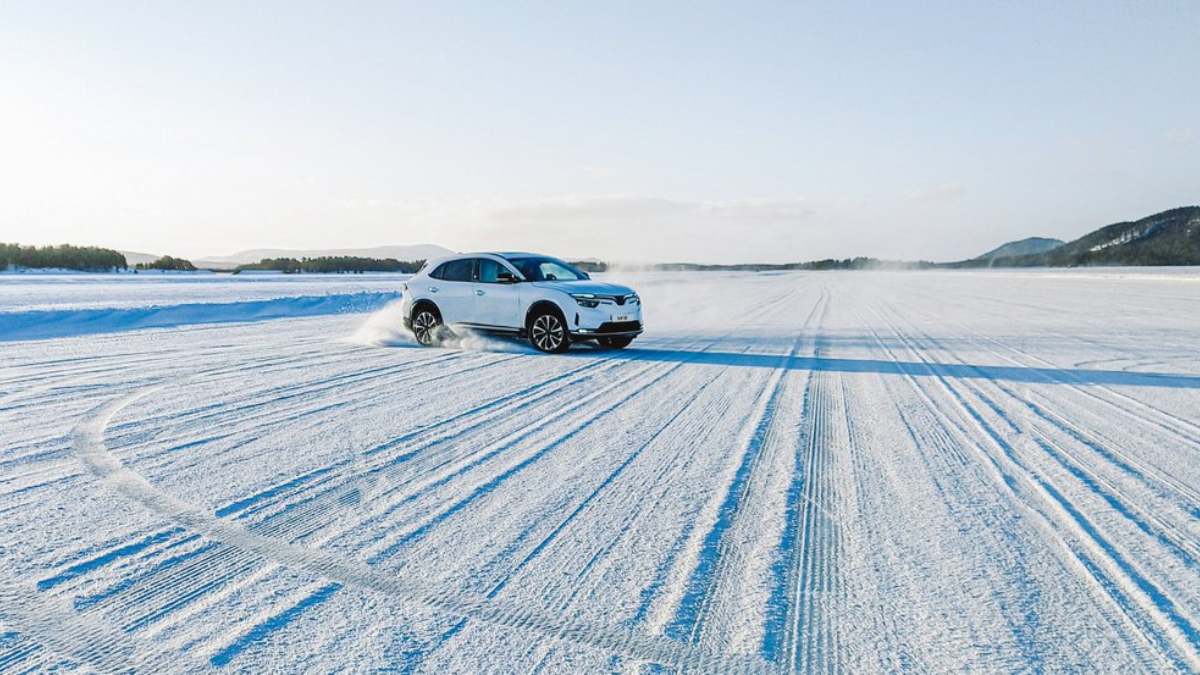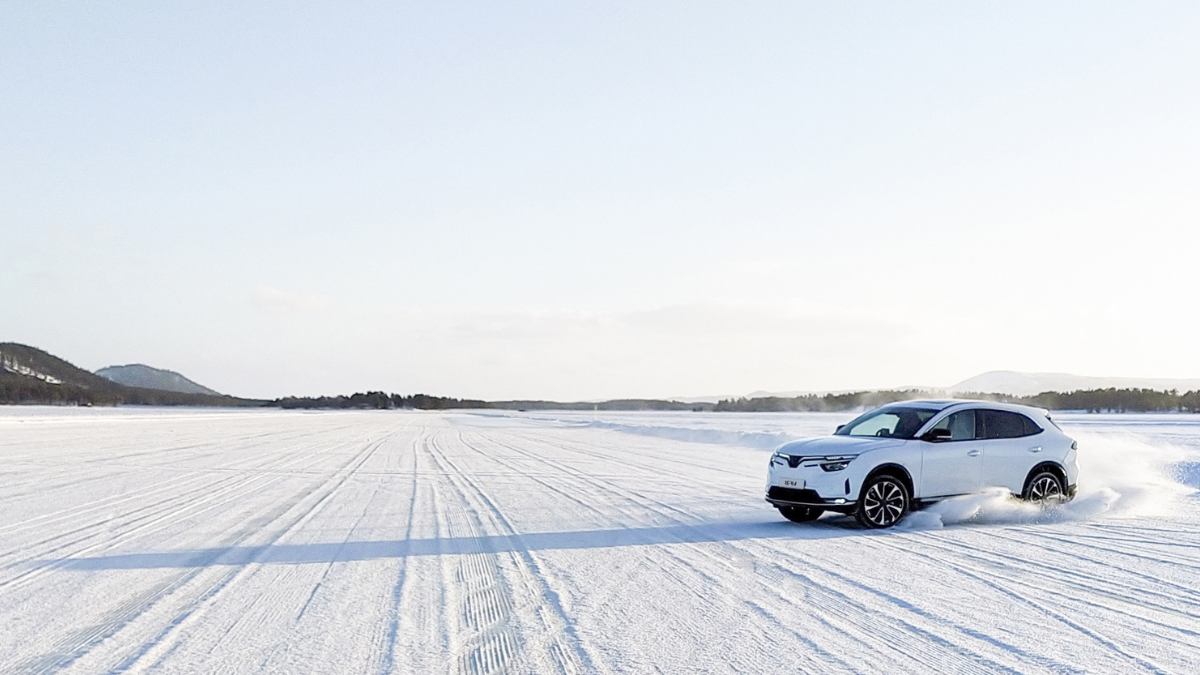Does Winter Impact EV Range?

Yes, cold temperatures can have a significant impact on an electric vehicle’s range. When the temperature drops, the battery’s performance can be affected, leading to reduced range. This is because batteries work best at their optimal temperature range, which is typically between 20°C to 30°C (68°F to 86°F).
In cold weather, the battery’s internal resistance increases, which can lead to a slower discharge rate, reduced power output, and a shorter overall range. Additionally, electric heaters are used to keep the cabin warm, which draws power from the battery and can further reduce range.
However, some modern EVs are equipped with thermal management systems that can help to mitigate the effects of cold temperatures on battery performance. These systems use various methods, such as heating or cooling the battery to maintain it at an optimal temperature, which can help to reduce the impact on range. VinFast eSUVs, furthermore, have gone through real-world cold climate testing in Sweden and hot climate testing in Dubai. Overall, while cold temperatures can impact an electric vehicle’s range, the effect varies depending on the specific vehicle, battery type, and weather conditions.
How Does Winter Affect EV Range?
Unlike gasoline cars, where heat is generated freely, an EV must produce cabin heat and manage a favorable battery temperature with the same energy from the battery. Heating the car interior draws energy from the battery.
The impact of cold weather on EV range can be significant in extremely cold climates where EV drivers may need to run the heater continuously to keep the passengers warm and comfortable. The amount of range lost in winter varies depending on several factors. Some electric vehicles may see a 10–20% range reduction in extremely cold weather, like in the US.
Most people assume range loss in cold temperatures is due to reduced battery performance. Very high and very low temperatures affect the battery that powers the EV. Chemical reactions within the battery slow down in colder temperatures, which then reduces its capacity and affects its overall performance.
The energy required to heat the car’s interior also draws power from the battery, reducing its range. During this period, even the simple electric vehicle charging process is affected. Charging in extremely cold weather takes longer.
Another factor that affects the EV range during winter is tire pressure. Cold weather causes the air in the tires to contract, leading to a drop in the tire pressure. When this happens, you experience a rolling resistance making the vehicle less efficient and reducing its range.
What to Do to Mitigate the Impact of Winter on EV Range
In locations with extreme weather, you must be cautious about planning your days. This article outlines six steps to mitigate the impact of winter weather on your EV’s range.
1. Preheat Your EV’s Battery
An EV battery works best at temperatures between 20oC and 25oC, and a slight movement toward the freezing point affects the battery’s performance. Cold temperatures slow down the cell reactions, consequently making the battery less efficient and reducing range.
To reduce the impact of cold temperatures, charge your vehicle overnight and start driving soon after disconnecting it from power supply.
You can also park your vehicle in an enclosed space as it minimizes the negative impact of winter on the car’s performance. Preheating your car while still plugged in can reduce the energy needed to heat the interior while driving. This will significantly preserve the battery range.
2. Plan for a Longer Charging Time
Temperatures below 40° Fahrenheit can reduce charging power. One study found that at 30° Fahrenheit, an EV battery took in 36% less energy than when the battery was charged for the same amount of time at 75° Fahrenheit. Whether you’re preparing for a long-distance trip or your daily commute, it’s important to account for the possibility of longer charge times.
You can also use apps or in-car navigation systems to find charging stations along your route when driving long distances. Adopting the fast-charging mechanism when the vehicle drops below 80%is another way to ensure you’re always ready regardless of your trip’s distance. This will heat the battery and increase energy for the next trip.
3. Check Your Tires
Regularly monitor your tire pressure to ensure it’s at the manufacturer-recommended levels. You can also equip your EVs with winter tires, although they may require higher energy consumption due to increased grip.
You can also use all-season tires when the weather conditions are less extreme. This helps you minimize the impact of cold weather on your EV’s efficiency.
4. Avoid Using the Heater
Wear warm heavy clothing and use heated seats or a heated steering wheel instead of relying solely on the heater to keep you and the passengers warm. This will reduce the strain on your battery and help preserve your range.
5. Keep Your EV Plugged In
Additionally, you can leave your EV plugged in while it’s parked to keep the battery warm and preserve its capacity. VinFast eSUVs have a preconditioning feature that can warm up the battery before driving.
6. Opt for a Smooth Driving Style
Eco-driving can be at the top of the list of energy savers during winter periods. This can include opting for routes that are less energy hungry. You can also adopt regenerative braking as often as possible to help recover more energy from the battery.
You can also have your foot off the accelerator in hazardous weather conditions. If your vehicle is covered in snow, you can remotely start or precondition it to melt snow before hitting the road. Scrape off any extra snow before to eliminate extra weight and drag.
Conclusion
Ultimately, while EV range can be affected by extreme weather conditions, the impact can vary depending on factors such as battery capacity and increased energy consumption for heating.
With careful planning, full understanding, and following simple steps, you can easily mitigate the impact and enjoy normal vehicle operation even in extreme weather conditions.
Bạn cần đăng nhập để tương tác với nội dung này: Đăng nhập.





